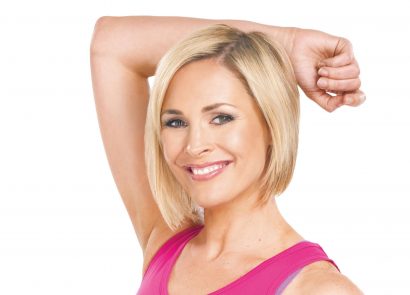In the last of our three-part series, we help you become clued up on skin conditions…
Whether your bathroom is home to a whole host of skincare products or you hardly remember to slap on your moisturiser in the morning, it’s important that we don’t just think about our skin in terms of aesthetics, but its health too. Our top priority should be protecting our skin from external factors, like the sun. However, skin problems can arise for many different reasons. So, to find out what we should be on the lookout for, we spoke to the skin experts about the most common conditions that people suffer from in the UK and how we can try and prevent them.
Psoriasis
Psoriasis is an inflammatory skin condition that causes a rapid build-up of skin cells and can result in the skin appearing red with scaly patches that are often painful, itchy and uncomfortable. Psoriasis affects approximately two percent of the population. It can affect people of all ages and can appear at any time, with no clear cause.
Look out for…
- Red, raised, inflamed patches of skin
- Whitish-silver scales or plaques on the red patches
- Dry skin that may crack and bleed
- Soreness around patches
- Itching and burning sensations around patches
- Thick, pitted nails
- Painful, swollen joints
“Many people with psoriasis go through periods where their skin will start ‘flaring up’ and then subsiding, for reasons that aren’t well understood,” says Dr Kathy Taghipour, a dermatologist (dermconsult.co.uk). “Psoriasis can appear on any part of the skin and it can even affect the nails, genitals and joints. It isn’t infectious and doesn’t usually cause scarring on the skin, however, it can cause increased or reduced skin pigmentation that can fade after some time. There are certain things that have shown to cause flares of psoriasis including smoking, stress, and alcohol. So if you are prone to psoriasis, it’s recommended that you try and avoid, or at the very least, cut back on these. Psoriasis is quite easy to detect as it has recognisable symptoms and a distinct appearance, and is usually diagnosed easily by a dermatologist. The type of treatment you need will depend on how bad your psoriasis is. Treatments include topical steroids, emollients (moisturisers) and vitamin D analogues (a form of synthetic vitamin D that you rub on your skin). If you suffer severely then tablets or injections are often used, and phototherapy (the use of UV light for its healing effects) is another option.”
Rosacea
Rosacea is a chronic skin condition and often shows up without warning in people between ages 30 and 50, more commonly in women and in those who have family members with rosacea. If you have fair skin and blush or flush easily, you may be at greater risk of developing it.
Look out for…
- Facial redness in the central part of your face
- Blood vessels on your nose and cheeks swelling and becoming visible
- Swollen, red bumps that sometimes contain pus
- Dry, irritated, swollen eyes and red, swollen eyelids
- A thickening of the skin on the nose, causing it to appear bulbous
“If you think you may have rosacea, it can be helpful to eliminate triggers from your lifestyle,” says cosmetic doctor Dr Rekha Tailor (healthandaesthetics.co.uk). “A few common ones include sun exposure, stress, wind, very hot or very cold air, humidity, strenuous exercise, alcohol, hot showers, spicy food, hot beverages, some skincare products, certain medications, and certain foods. These triggers aren’t the cause, but they may worsen symptoms or cause a flare-up in someone who has the condition. If you think you may have rosacea, I would recommend keeping a diary focused on your diet and lifestyle, so you can spot flareups in the first instance. While it isn’t curable, it is treatable. Speak to your dermatologist or cosmetic doctor about a multiprong treatment approach.”
If you do one thing today…
Have you put on sunscreen? Eight out of 10 people fail to apply enough sun protection before going outside. Try to apply ½ teaspoon of SPF to your face every day and with summer on the horizon, avoid the rays between 11am and 3pm if you can, apply your sunscreen regularly throughout the day, and choose sunglasses that have a UV light filter.
Eczema
Commonly known as atopic dermatitis, eczema is ‘the itch that rashes’, an itching sensation followed by a visible rash that then develops.
Look out for…
- Dry, sensitive skin
- Red, inflamed skin
- Very bad itching
- Dark coloured patches of skin
- Rough, leathery or scaly patches of skin
- Oozing or crusting
- Areas of swelling
“Eczema lesions are typically pink and scaly on pale skin tones, or a purple-to-brown colour on darker skin tones, with accentuated skin lines,” explains Dr Tailor. “Common eczema locations are the eyelids, neck, front of the elbows, and back of the knees. Eczema can really flare-up in the cold winter months, when patients are exposed to central heating circulating in their home, then hit by blustery winds when they’re outside. When it comes to treatment, sufferers are advised to use a good hydrator to help restore the barrier function of the skin. In extreme cases, steroids can help alleviate the itching and inflammation of the skin.”
Skin cancer
There are two main types of skin cancer: melanoma and non-melanoma (which includes basal cell, squamous cell and other rarer types). It’s among the most common cancers in the UK; around 16,000 people are diagnosed with melanoma and at least 147,000 with non- melanoma skin cancer each year.
Look out for…
- A patch of skin or existing mole that changes in size, shape or colour
- An area that hurts, itches, bleeds, scabs, crusts or otherwise looks unusual and that doesn’t heal within four weeks
- Sun damage is the cause of many skin cancers, so they often develop in places that are exposed to the sun
“Although skin cancer is common, it’s also very treatable, especially when caught early,” advises Julia Frater, Cancer Research’s senior specialist cancer information nurse (cancerresearchuk.org). “Skin cancer can sometimes be diagnosed just by looking, but often doctors will take a sample (biopsy) of the area or remove it all for testing. Treatment depends on what type of skin cancer it is, where and how deep within the skin it is, and whether the cancer has spread anywhere else in the body. Usually, surgery will be the next step. Other treatments might also be an option in some instances, such as topical immune stimulating creams which can be used for basal cell skin cancers. We know that 90 percent of people diagnosed with melanoma in England and Wales survive their disease for 10 years or more. Early diagnosis makes a big difference to cancer survival, so it’s important to check your skin and raise any concerns with your GP.”
“I’d never thought much about protecting myself from the sun”
Isser Ahmed, 37, developed skin cancer after her holiday.
“I’d never thought much about protecting myself from the sun; I did apply some sunscreen but assumed I’d be OK because of the colour of my skin. On holiday, a friend noticed a small mole on the back of my leg. When we got home, I went to my GP, who sent me to a dermatologist. The mole was removed for testing and then I had an MRI which confirmed I had skin cancer. I had more tissue removed from the area where the mole had been, and regular check-ups. My health was good until five years later when I found a lump in my groin – the same leg where I’d had the mole. More tests confirmed the cancer had returned and spread into my lymph nodes, so I had an operation to remove it. Now I’m living free of cancer, but I say to everyone, stay safe in the sun.”
Skin superheroes
Lather up and layer up. If it isn’t already, a good SPF (we’re talking factor 50) should be on your list of skincare essentials. Missing your holiday glow? Fake tans are a great way of recreating your vacation tan, so to help you get the sunkissed look (without the UV rays) here’s our list of sun must-haves…
DECLÉOR Aroma Sun Expert Protective Anti-Wrinkle Cream High Protection SPF 50, £27.20, feelunique.com

Dove DermaSpa Summer Revived Fair to Medium Gradual Self Fake Tan, £3.50, amazon.co.uk

No7 Perfectly Bronzed Self Tan Quick Dry Tinted Lotion Light/ Medium, £12.50, boots.co.uk

NIVEA SUN Cooling Suncream Spray SPF 30, Protect & Refresh, £8, boots.co.uk

Hawaiian Tropic Lip Balm Sun Protection Stick SPF30 Tropical Flavour, £6, feelunique.com






















